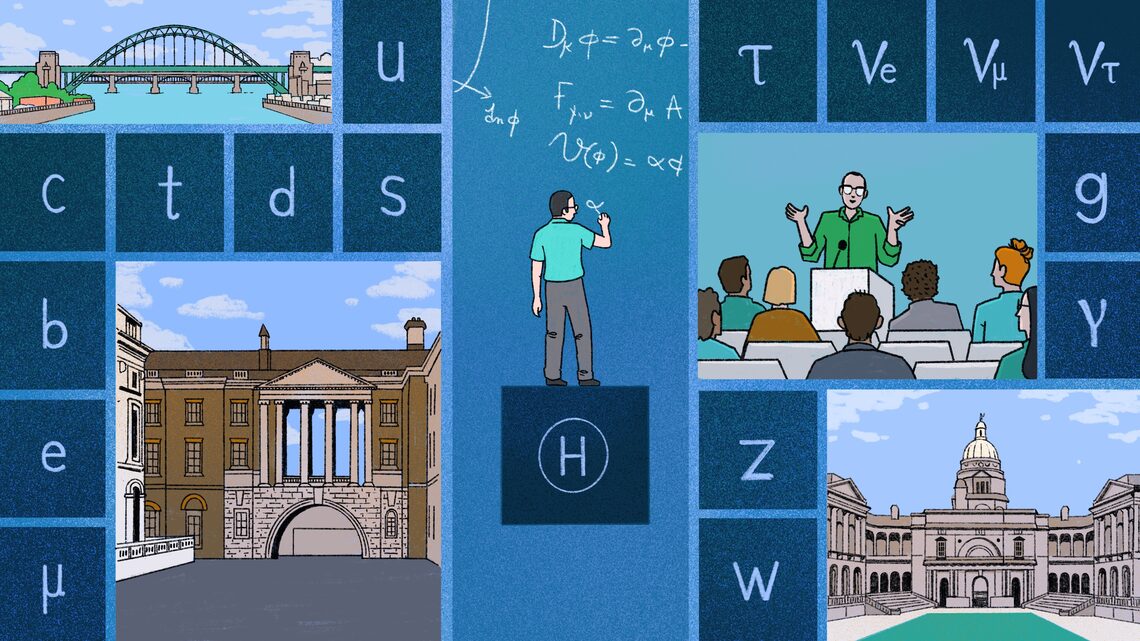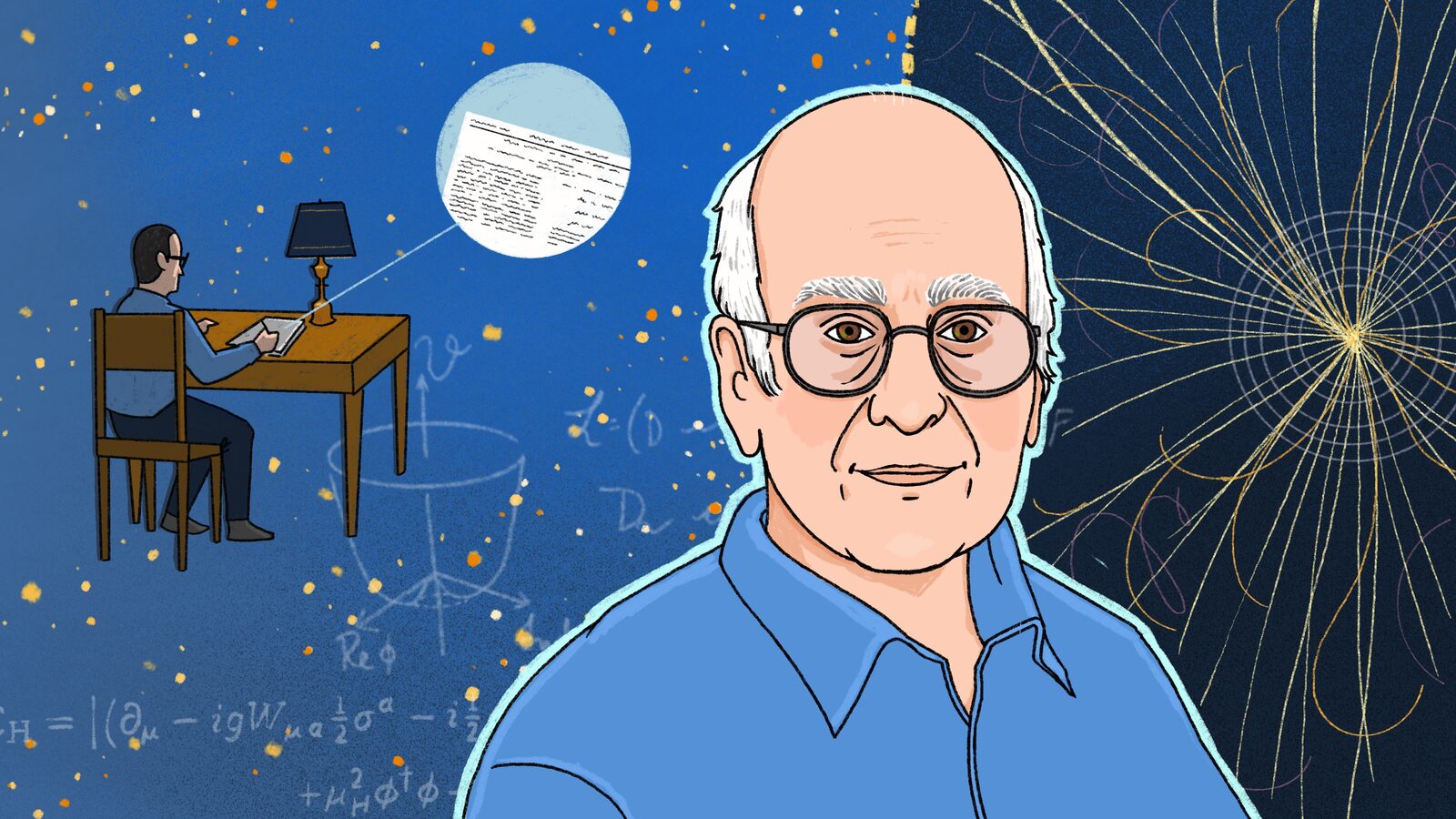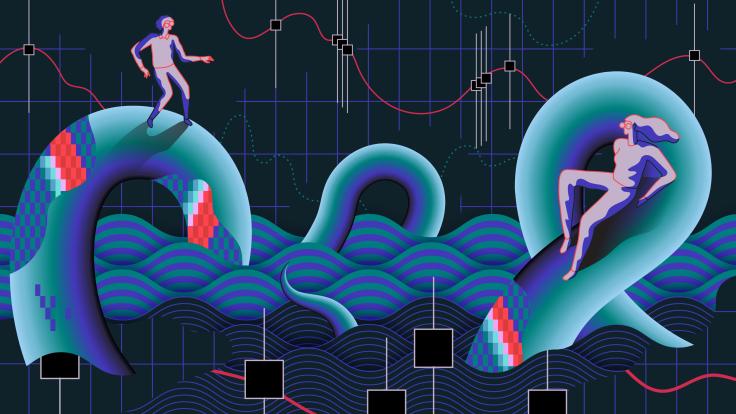When researchers at the Large Hadron Collider announced the discovery of the Higgs boson on July 4, 2012, physicist Peter Higgs reacted to the vindication of his most important theoretical work in a typically mild manner, saying, “It’s very nice to be right sometimes.”
The discovery triggered global celebration among the particle physics community. The Higgs boson was, until then, the only particle in the Standard Model of particle physics yet to be experimentally measured. Looking for it was a key motivation for building the LHC, and the defining question for many in my generation of particle physics researchers. Finding it confirmed long-standing predictions about the fundamental particles and forces that govern the universe.
This year, the physics community came together again, this time to mourn the passing of Higgs at the age of 94.
It was far from given that the particle Higgs predicted would be found in Higgs’s lifetime. The mathematical framework that implied the existence of the boson did not elaborate on what mass it would possess—meaning physicists would need to look for it everywhere across a wide range.
Scientists finally narrowed in on it 48 years after Higgs and others proposed its existence. No other fundamental particle has taken so long to find.
As Reina Camacho Toro, an experimental particle physicist at Paris Cité University and CERN, says, the decade-spanning story of the prediction and detection of the Higgs highlights “the importance of working together, [as well as] the communication between the theory community and experimental community.”

Almost missing the bigger picture
Born in Newcastle-upon-Tyne, Higgs completed his PhD at Kings College London and then continued his research at the University of Edinburgh. That’s where he was when he published his most famous paper, in 1964.
At the time, the Standard Model of particle physics had not yet been conceived.
Physicists were still trying to make sense of the menagerie of particles called hadrons that were continuously being discovered in early accelerator and cosmic-ray experiments. They did not yet know that these particles were all combinations of a much smaller set of fundamental particles, quarks, bound together by the strong force.
Physicists knew about the strong force, which they had observed holding together the particles that comprise the nuclei of atoms. They also knew about the weak force, which they had observed playing its role in radioactive decay. And the newly developed theory of quantum electrodynamics neatly described how electric and magnetic charges combined into the electromagnetic interaction.
Physicists tried to find an analogous field theory to combine the strong and weak forces, but they could not work it out. The problem was related to the particles that carry the weak force, called W and Z bosons. Whereas all the other force-carrying particles are massless, W and Z bosons are not.
Physicists could not figure out why W and Z bosons were different. Why were they the only force-carrying particles with masses? The unusual particles broke a symmetry in nature.
In 1964, Higgs published a paper explaining how the symmetry might have been broken. To put it much more simply than he did: Imagine the early universe was filled by a symmetrical but unstable field, responsible for providing particle masses, that can, with time, settle into a more stable state. This transformation could have retained the mathematical symmetry of the equations explaining the different forces—but instead resulted in an observable difference between the particles carrying those forces. The briefly unstable field, now known as the Higgs field, made it possible to have massive Ws and Zs.
Higgs further developed his ideas in a subsequent paper, which outlined what would eventually be recognized as “the Higgs model.” The publication Physics Letters initially rejected the paper due to a perceived lack of urgency to publicize the theory. Upon receiving this news, Higgs revised the paper. He drew attention to the possibility that this field would be associated with a massive boson also alluded to in a paper written by theorists Francois Englert and Robert Brout. The new boson would be different from all the others: They all had a property called spin, and the new boson would be spin-zero. He had given physicists a way to prove the theory was correct: Find the new boson.
Physics Letters accepted the paper, but it took years for the research community to pay much attention to it.
This delay is a continuing source of inspiration. Dave Sutherland, a theoretical particle physicist at the University of Glasgow, says, “As a theorist, you are hugely buoyed by [this story]… the whole history of particle physics is littered with these successes.”
A massive discovery
Searching for the Higgs boson occupied particle physics for most of the latter half of the twentieth century and well into the twenty-first. However, its discovery is just the first scene in the particle’s story, with many important chapters still to be written.
Even basic facts about the particle have yet to be established, such as whether the Higgs is a fundamental particle or has an internal structure. Sutherland adds that “every theorist [is interested in] the Higgs trilinear” coupling, a measurement that would provide crucial information about how Higgs bosons are produced in pairs within the Standard Model.
On the experimental side, the enormous quantity of data collected during the second run of the LHC allowed the ATLAS and CMS experiments at CERN to precisely establish how the Higgs couples to fundamental particles such as the top quark, bottom quark and tau lepton. But there is still much work to do. As Camacho Toro points out, “there are other couplings that we have not observed yet, like for example the couplings to [charm] quarks or the couplings even to electrons or to muons.”
Whether the Higgs boson will continue to confirm theorists’ predictions, or force them to come up with new explanations, one thing is certain: Research into the Higgs remains a vibrant field, on both the experimental and theoretical fronts.







